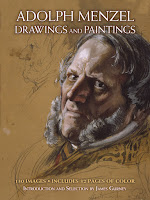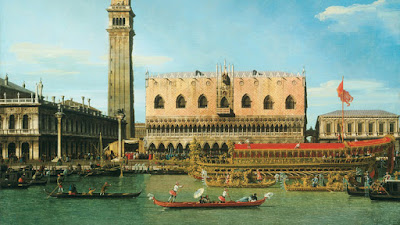 |
| Adolph Menzel, Death as an Unwelcome Guest; 1844/1845. Watercolor and gouache. 5.1 x 3.6 in.© bpk/ Kupferstichkabinett/SMB/Volker-H. Schneider |
Who is that at the door? It's Death, of course, coming to collect. He wears a heavy coat and tilts his hat forward so that he won't be recognized. The thin heel of his foot comes out of his slipper.

Not just yet. Death is banished out the window with a hail of wine bottles. Good riddance to you until another year!
 These two paintings are published together for the first time, and in color, in my new book of drawings and watercolors by Adolph Menzel. The book contains 130 images, including 32 pages of color.
These two paintings are published together for the first time, and in color, in my new book of drawings and watercolors by Adolph Menzel. The book contains 130 images, including 32 pages of color.Here's the link if you'd like to order a signed copy from my website store.











































